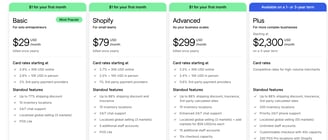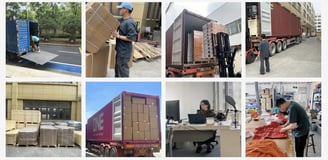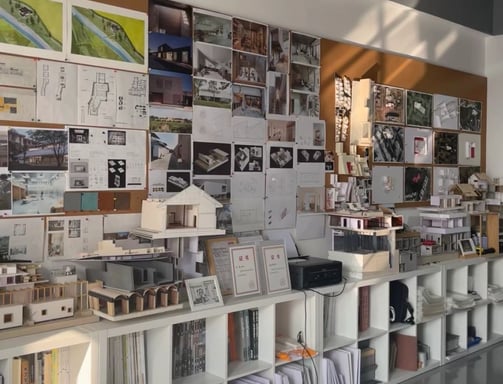Chapter 1:Can i import from China?How much budget do i need?








In the dynamic landscape of economic globalization, China, widely recognized as the world's leading manufacturing powerhouse, stands out with its unrivaled advantages. Boasting a comprehensive and highly efficient industrial system, China is capable of supplying everything from fundamental raw materials to sophisticated high-end finished products.
A large number of experienced factories and professional talents converge here, and with its massive production capacity, it continuously channels an array of high-quality products into the global marketplace.
Whether you're a multinational corporate behemoth, a budding small startup, or an individual consumer, direct imports from China present a viable option to fulfill your business requirements or personal living needs.
However, given the vast disparities in import business models and product categories, the required budgets vary substantially. This article will comprehensively detail five common import modes, equipping you with the knowledge to make the most suitable import decisions based on your specific circumstances.
Zero to $100
Launching via dropshipping? We’ll reveal how micro - budgets unlock global trade.
$2,000+ Scaling Playbook
For established e - commerce sellers ready to optimize margins.
Product Development Hub
Cost structures for custom manufacturing and OEM projects.
Wholesale Warriors
Traditional import/retail models demystified.
Personal & Corporate Buyers
Strategic sourcing for non - commercial needs.
I. Dropshipping Mode for Small-Budget Entrepreneurs ($100)
For those with entrepreneurial aspirations but limited financial resources, the Dropshipping model serves as a gateway to the e-commerce realm. Here are the key characteristics and operational aspects of this mode:
Affordable Website Building: By leveraging the powerful e-commerce website-building platform Shopify, you can build a unique online store at a low cost. It only requires a monthly fee of $29, along with a generous 90-day free trial period. Additionally, registering a domain name costs a mere $10, enabling you to establish your exclusive online presence.
Diverse Marketing Strategies: When it comes to store promotion, social media advertising is an effective and cost-efficient approach. For instance, investing $50 in Facebook advertising can precisely target your desired customer base. Collaborating with micro-influencers, who may have a smaller but highly engaged and precisely targeted follower base, can also significantly boost your product visibility. Their influence and fan following can help promote your store's products and attract potential customers.
Convenient Yet Slow Delivery: Once an order is generated in your store, you don't need to worry about the shipping process. Simply synchronize the order details with suppliers on platforms like AliExpress, and they will directly ship the products to the customers. While this delivery method has relatively low freight costs, the downside is the longer delivery time, typically ranging from 10 to 20 days for customers to receive their purchases.
Advantages and Disadvantages: Despite the relatively high product unit price due to the inability to buy in bulk, the Dropshipping model remains popular among small-budget entrepreneurs because of its low startup cost and zero inventory risk.
II. Import Strategies for Established E-commerce Sellers ($2,000 + Budget)
For mature e-commerce sellers who have already made their mark in the industry and achieved a certain scale, the following import strategies can be highly beneficial:
Cost-Saving through Bulk Purchasing: Bulk purchasing is a crucial strategy for further reducing costs and enhancing profit margins. Generally, meeting a minimum order quantity (MOQ) of at least $1,000 can secure substantial price discounts, potentially reducing the product unit price by 30% to 50%.
Transportation Mode Selection: In the transportation aspect, sea freight and air freight each have their own pros and cons. Sea freight is cost-effective; for example, it costs only $500 to ship goods to the FBA warehouse in the United States, although it comes with a long transit time of 35 days. On the other hand, air freight is extremely time-efficient, delivering goods to the US FBA warehouse in just 7 days, but it comes at a higher cost, potentially reaching $2,000.
Supplier Connection: To achieve customized packaging and brand building, and to enhance the product's market recognition and competitiveness, established e-commerce sellers often need to directly establish partnerships with Chinese manufacturers or trading companies. You can identify suitable partners from a vast pool of suppliers through globally renowned e-commerce platforms like Alibaba. Alternatively, entrusting professional Chinese purchasing companies, with their extensive industry resources and professional procurement expertise, can help you find reliable suppliers and ensure product quality and supply stability.
III. Developing New Products (e.g., Plastic Products)
Developing new products is a journey filled with both challenges and opportunities, and the development difficulties and costs vary greatly across different product categories. Here are the details:
Development Thresholds and Costs: Take clothing and footwear products as examples; their development thresholds are relatively low, with a minimum order quantity of just 1,000 pieces, which provides many entrepreneurs with the opportunity to enter this field. However, the development of plastic products is much more complex. It requires mold opening, and each mold can cost at least $2,000, significantly increasing the overall development cost. Considering all aspects, the total budget for developing new products often exceeds $10,000.
Options for Limited-Budget Ventures: If your budget is tight, opting to rebrand existing products is a smart choice. This approach not only saves a significant amount of R & D and mold-opening costs, with an approximate budget of $2,000, but also allows you to quickly introduce products to the market by leveraging the quality and market reputation of existing mature products.
Market Validation: Before embarking on large-scale production, it's advisable to conduct product crowdfunding campaigns on platforms like Kickstarter. This helps you gauge the market demand and potential of your products through market feedback. After confirming a positive market response, you can proceed with mass production, effectively mitigating market risks.
IV. Import Strategies for Traditional Wholesale/Retail Businesses
Traditional wholesale and retail businesses encounter numerous challenges during the procurement process. The following import strategies can offer solutions:
Current Situation and Challenges: In the procurement process, traditional businesses often face issues such as small purchase volumes and a wide range of product categories, forcing them to rely on local wholesalers. While local wholesalers may provide favorable payment terms to ease the financial burden, the product prices are relatively high, squeezing profit margins.
Recommendations for Bulk Imports: When the purchase quantity of a particular product reaches 500 pieces, it's recommended that businesses consider bulk imports, with a total budget ranging from approximately $10,000 to $20,000. At this point, by collaborating with professional Chinese purchasing companies to integrate the supply chain, you can optimize the procurement process, reduce procurement costs, and obtain more price-competitive products. Simultaneously, this ensures better product quality and stability, helping you gain a more advantageous position in the market.
V. Import for Personal/Company Self-use
For the import of bulk items for personal or company self-use, the following points are essential:
Cost-Saving Benefits: Importing bulk items such as furniture and building materials from China offers significant cost advantages, potentially saving 30% to 50% of the costs.
On-site Inspection: To ensure the purchase of high-quality and cost-effective products, it's advisable to conduct on-site inspections at well-known wholesale markets in Guangzhou, Foshan, etc. These markets allow you to directly assess the product quality and craftsmanship and engage in face-to-face communication with suppliers to obtain more detailed product information and better prices.
Transportation Mode Preference: In terms of transportation, sea freight is the preferred choice due to its high cost-performance ratio. Even for small-batch shipments, relatively low freight rates can be obtained, ensuring the safe delivery of goods while effectively controlling transportation costs.
In conclusion, there are numerous import modes available for sourcing products from China, each with its own distinct advantages and suitable scenarios. Whether you're an enterprise or an individual, when choosing an import mode, it's crucial to thoroughly consider key factors such as your budget, business model, and product type. After a comprehensive analysis and evaluation, you can make an informed decision that best meets your needs, maximizing cost-effectiveness in the import process and achieving your business objectives or personal requirements.
Ming Sourcing


Address
No. 366, Xiangyun Road, Yuhang District, Hangzhou City, Zhejiang Province
Company
Yiwu Ming YF Trading Company
